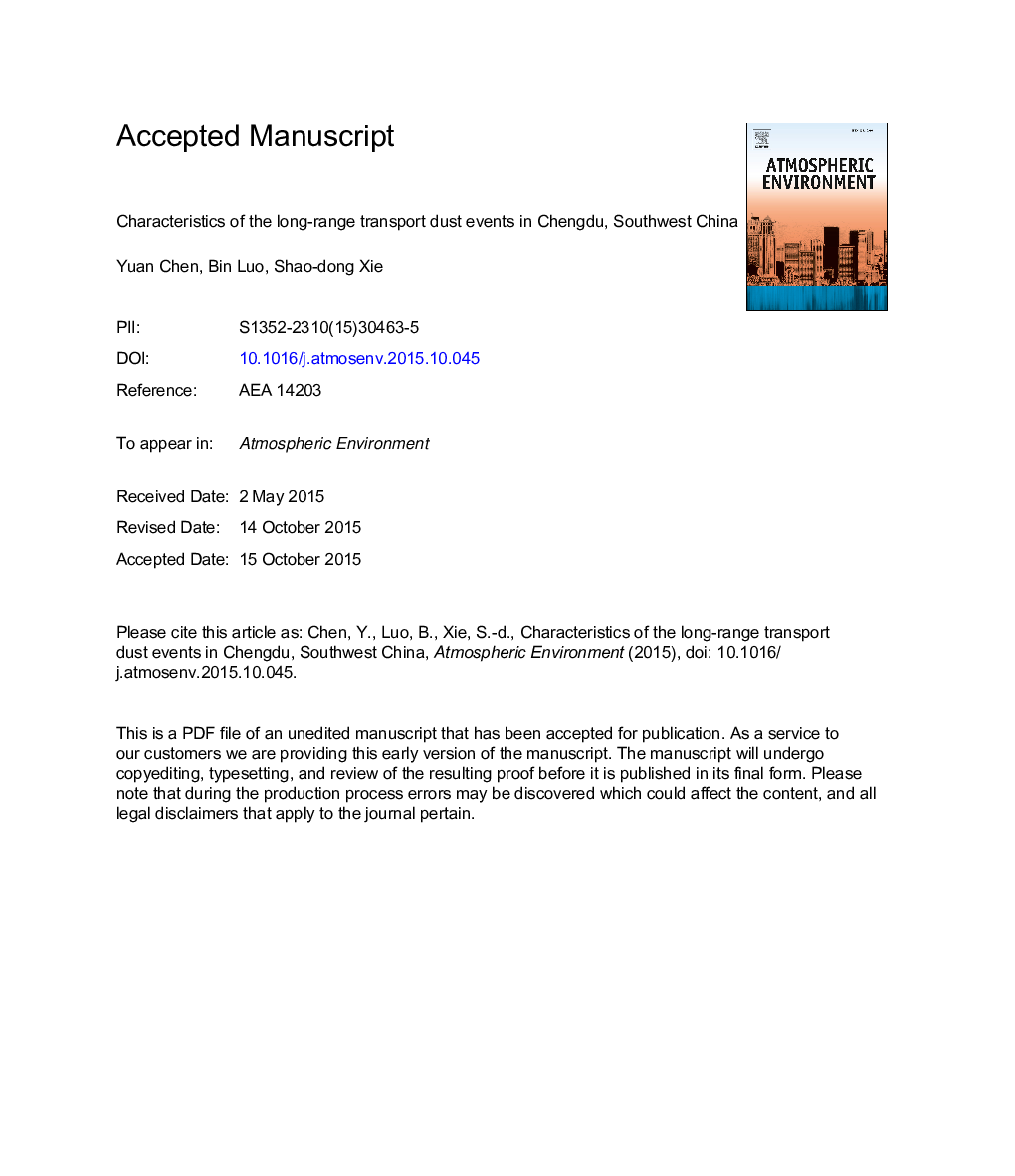| Article ID | Journal | Published Year | Pages | File Type |
|---|---|---|---|---|
| 6337089 | Atmospheric Environment | 2015 | 30 Pages |
Abstract
Chengdu is an inland megacity in the Sichuan Basin, where dust influence remained an open question. During a one-year haze campaign, two dust events were identified in March 2013, indicating that desert dust can be transported to Chengdu and impacted local air quality strongly. The suggested low SO2/PM10, NO2/PM10 and PM2.5/PM10 ratios of 0.15, 0.27 and 0.40 could be used as immediate indicators for dust days. On typical dust day of March 12, PM10 was as high as 359.1 μg mâ3, and crustal matter contributed 80.5% to total PM2.5 mass (106.6 μg mâ3). Enrichment factors of most elements have decreased due to the dilution effect except for Ca and Mg. The dust was mainly from western and northern dust regions in China, including the “Northerly Mongolia Path”, “Western Desert Path” and “Northwestern Desert Path”. Due to the obstruction of Qinghai-Tibet Plateau on the west, the dust air to Chengdu was mostly from the northeastward direction after passing over Qinling Mountain. Moreover, the air experienced obvious elevation from its source regions driven by the cold front synoptic pattern. The spatial distribution of high AOD (Aerosol Optical Depth) values over 1.2 but low Ã
ngström exponent of 0.5-0.6 around Chengdu verified the coarse pollution patterns. However, the dust pollution was not serious in nearby Chongqing and Guizhou and exhibited weak regional feature, a result different from those in Beijing and Shanghai.
Keywords
Related Topics
Physical Sciences and Engineering
Earth and Planetary Sciences
Atmospheric Science
Authors
Yuan Chen, Bin Luo, Shao-dong Xie,
